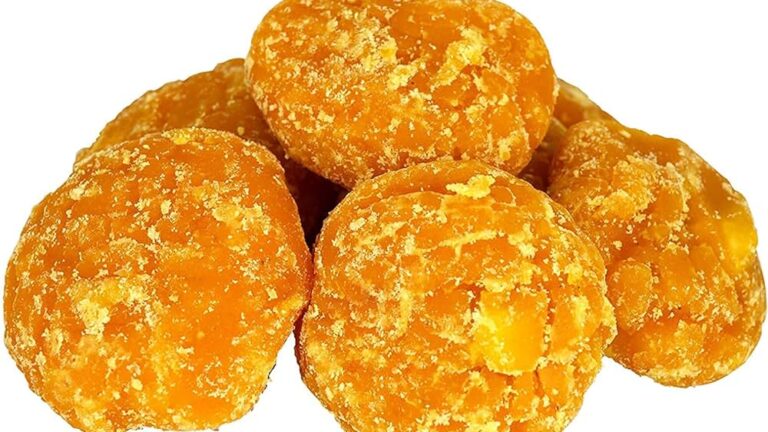Jaggery is a traditional sweetener used in many cuisines across India and other parts of Asia. While there are different types of jaggery, the two most common are palm jaggery and normal jaggery (often made from sugarcane. Though both are unrefined sugars, they come from different sources and have distinct Flavors and uses.
Source
Palm jaggery is made from the sap of various palm trees, including date palm, coconut palm, and palmyra palm. The sap is collected, boiled, and then allowed to solidify to form jaggery.
Regular jaggery (or sugarcane jaggery) is obtained from the juice of sugarcane. The juice is extracted from sugarcane, then boiled until it thickens and solidifies.
Flavour and Colour
Palm Jaggery has a rich, earthy flavour with hints of caramel, molasses, and sometimes a slight smokiness. It is typically darker in colour, varying from amber to deep brown.
Normal Jaggery has a milder, sweeter taste, with less complexity. It is typically lighter in colour, ranging from golden to light brown.
Nutritional Value
Palm Jaggery is often considered more nutritious because it contains higher amounts of minerals like iron, magnesium, potassium, and calcium. It’s also rich in antioxidants.
Normal Jaggery is still a healthy alternative to refined sugar, providing some minerals like iron, but generally in smaller amounts compared to palm jaggery.
Uses in Cooking
Palm jaggery is widely used in South Indian and Southeast Asian desserts, sweets, and even Savory dishes. Its unique flavour adds depth to dishes like payasam or curries.
Normal Jaggery is more widely used across India for making sweets, traditional drinks, and even as a sweetener in everyday cooking.
In conclusion, while both types of jaggery are natural and healthier than refined sugar, palm jaggery is known for its richer flavour and higher nutritional benefits.








